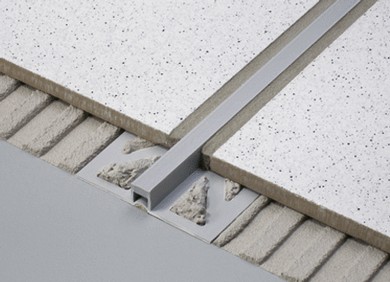

Duraflex Thin-bed Large Legs PDF
Duraflex Expansion Profile Range PDF
DURAFLEX expansion joint profiles by Dural are suitable for areas subject to medium amounts of wear and stresses. This includes offices and sales outlets. They can also be used outdoors (on balconies or facades). Their visible surface has a width of 8 mm, which corresponds to the customary width for expansion joints. When loads act at a point, legs 57 mm wide spread the load evenly throughout the flooring and the foundations.
The profiles are available in heights from 6 to 15 mm. They should be led using the thin-bed technique..
Important:Any expansion joints in the foundations need to be followed precisely.
DURAFLEX expansion joint profiles are made of hard-soft PVC. That includes the legs. The following colours are available: white, beige, black and grey.
DURAFLEX expansion joint profiles are resistant to UBV exposure and do not include emollients. They are resistant to all kinds of chemical stresses that are usually experienced by tiles. Damage to the visible surface due to deformation or scratching is unlikely under normal circumstances.
However, their usage with regard to chemical and mechanical resistance should be assessed in each individual case.
DURAFLEX expansion joint profiles do not require any special maintenance. They are resistant to bacteria and fungus and are “automatically" cleaned when the tiles are cleaned. Cleaning agents should be free of hydrochloric and hydrofluoric acid and should not contain abrasives.